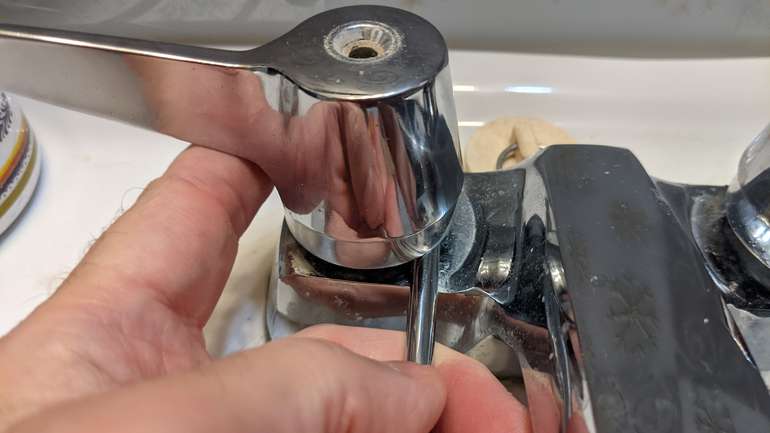In this article further down you can find a good deal of worthwhile data about Why Are My Faucets Dripping (And Can I Fix It Myself)?.

Trickling taps may appear like a small trouble, however their impact exceeds simply the nuisance of the noise. From wasting water to sustaining unnecessary financial prices and health and wellness risks, overlooking a leaking faucet can lead to numerous consequences. In this write-up, we'll explore why it's crucial to resolve this usual home concern quickly and properly.
Wastage of Water
Ecological Influence
Trickling taps contribute dramatically to water wastage. According to the Environmental Protection Agency (EPA), a solitary tap trickling at one drip per second can waste greater than 3,000 gallons of water annually. This not only pressures water sources however also influences environments and wildlife depending on them.
Step-by-Step Overview to Taking Care Of a Dripping Tap
Tools Called for
Before trying to repair a dripping tap, collect the required devices, including an adjustable wrench, screwdrivers, substitute components (such as washing machines or cartridges), and plumber's tape.
Typical Faucet Issues and Their Solutions
Determine the type of tap and the details concern creating the drip. Typical problems consist of damaged washers, corroded valve seats, or damaged O-rings. Describe manufacturer directions or on the internet tutorials for detailed support on fixings.
Financial Costs
Increased Water Bills
Beyond the environmental impact, dripping taps can blow up water costs considerably. The collected waste in time translates into greater energy expenses, which might have been prevented with timely fixings.
Possible Property Damages
Furthermore, prolonged trickling can result in harm to fixtures and surface areas surrounding the tap. Water build-up can trigger staining, deterioration, and even architectural concerns if left ignored, causing additional repair service prices.
Health and wellness Problems
Mold And Mildew and Mildew Development
The continuous presence of moisture from a leaking tap creates a suitable setting for mold and mildew and mildew growth. These fungis not only endanger indoor air high quality but likewise posture health and wellness risks, specifically for people with respiratory system conditions or allergic reactions.
Waterborne Diseases
Stationary water in trickling faucets can end up being a breeding place for bacteria and various other virus, increasing the threat of waterborne diseases. Pollutants such as Legionella microorganisms grow in stationary water, possibly leading to major diseases when ingested or inhaled.
DIY vs. Expert Repair work
Benefits and drawbacks of Do It Yourself Repair Service
While some may attempt to fix a dripping tap themselves, DIY repair services come with their very own set of difficulties. Without proper knowledge and devices, do it yourself attempts can exacerbate the concern or result in incomplete fixings, extending the problem.
Advantages of Hiring a Professional Plumber
Hiring a professional plumber guarantees that the underlying cause of the leaking faucet is attended to effectively. Plumbing professionals possess the expertise and devices to identify and fix faucet concerns efficiently, saving time and lessening the threat of more damage.
Environmental Responsibility
Private Payment to Preservation
Taking obligation for dealing with trickling taps straightens with more comprehensive initiatives towards water conservation and environmental sustainability. Every individual's activities collectively make a considerable impact on maintaining valuable sources.
Sustainable Living Practices
By focusing on timely repairs and embracing water-saving habits, people add to lasting living practices that profit both existing and future generations.
Preventive Measures
Normal Maintenance Tips
To avoid trickling faucets, do regular maintenance such as cleaning aerators, checking for leakages, and replacing worn-out parts immediately. Additionally, consider setting up water-saving gadgets or updating to extra efficient fixtures.
Significance of Prompt Services
Addressing leaking taps as quickly as they're seen prevents further water waste and possible damages, ultimately conserving both water and money over time.
Effect On Residential Or Commercial Property Value
Understanding of Well-Maintained Home
Preserving a property in good condition, consisting of addressing upkeep concerns like leaking taps, improves its viewed value and worth amongst prospective buyers or lessees.
Impact on Resale Value
Characteristics with well-maintained plumbing components, including taps, command higher resale worths in the realty market. Attending to trickling faucets can add to a positive perception during residential property examinations and negotiations.
Final thought
Resolving a trickling tap exceeds simple ease; it's an essential action towards preserving water, reducing monetary costs, and guarding wellness and residential property. Whether via do it yourself repair services or specialist help, acting to take care of leaking faucets is a tiny yet impactful method to promote responsible stewardship of sources and add to a healthier, more sustainable future.
How to Fix a Leaky Faucet: Step-by-Step Repair Guide
A leaky faucet may seem like a simple annoyance, but if it's not fixed promptly, that leak could cost hundreds to potentially thousands. From water damage to mold, mildew, and high water bills, even a tiny leak can be catastrophic if left unattended. Damage like this can even affect the overall value of your home, so it's important to take the right approach for leaky faucet repair. You may need the help of a plumber in some cases, but we've got a few tips you can try on how to fix a leaky faucet before calling the pros.
Four Faucet Types
When you're learning how to fix a leaky faucet, the first step is knowing what kind of faucet you're working with! There are four common types.
Cartridge Faucets
Cartridge faucets come in one- or two-handled varieties. In one-handled cartridge faucets, hot and cold water combines in a single cartridge. In the two-handled versions, hot and cold water are controlled separately and mixed in the faucet.
Ball Faucets
Ball faucets have a single lever you push up and down to adjust the pressure and rotate to change the temperature. A slotted metal ball controls the amount of water allowed into the spout.
Compression Washer Faucets
They're the oldest type of faucet, but they're still used in many homes — especially older ones. Compression faucets have two separate handles that, when turned, raise or lower the washer that seals a water valve. This valve stops water from flowing through the faucet when it is turned off.
Disc Faucets
Disc faucets rarely need to be repaired due to their maintenance-free design. The water flow is controlled by two discs — the upper one raises and lowers against a fixed lower disc, creating a watertight seal. If your disc faucet starts leaking, you may need to replace the seals or clean residue buildup from the inlets.
Fixing a Leaky Faucet
Step 1: Turn Off the Water
Whether you're learning how to fix a leaky bathtub faucet or how to fix a leaky kitchen faucet, always turn off the water supply to your working area when you're fixing a leak. The last thing you want is a flood added to your list of things to fix.
Look for the shutoff valves below your sink or around the tub and turn them clockwise to stop the water flow. If your faucet doesn't have shutoff valves, you may need to turn off the water for the whole house. Check to make sure it's off by turning the faucet on. If nothing comes out, you're ready to start the repair.
Step 2: Take Apart the Faucet
How you disassemble your faucet depends on the type of fixture you have. You can use a flathead screwdriver to remove the caps on top of the handle or handles for cartridge and compression faucets. Inside, you should see handle screws. Unscrew these with a screwdriver to remove the handle.
Disc- and ball-style faucets will typically have an inlet screw near the handle, and removing that will reveal the interior of the faucet.
Detach the Valve Stem
For cartridge- and compression-style faucets, you'll see the inner valve stem or cartridge once you remove the faucet handles. If you have a compression faucet, unscrew the brass valve stem. If you have a cartridge faucet, pull out the cartridge. If your cartridge has been in place for a while, it may require some tools or extra force to remove it due to mineral deposits.
Examine and Replace Parts
Once you've removed the parts, check them out to confirm what needs to be replaced. You may see corroded rubber washers, O-rings, stems, or cartridges. On a ball-style faucet, check the seats and springs for damage.
If you need to repair a leaky disc faucet, check the inlet and seals on the lower disc.
Once you determine what parts must be replaced, visit your local hardware store. Bring the damaged parts with you to ensure you can purchase the correct components to replace them.
Clean Valves and Faucet Cavity
If you've removed a stem or cartridge, you may notice mineral buildup in the faucet's threads. Use white vinegar to clean the valve seat by soaking it for a few minutes, then scrub it away with a soft toothbrush and rinse with warm water. You can also clean the interior of the faucet in the same way.
Reassemble the Faucet
Once your faucet is cleaned and the required parts have been replaced, it's time to reassemble it. Put the pieces back together and slowly turn the water supply back on. Doing this slowly is crucial because too much initial water pressure can damage the new hardware you've just installed.
https://homewarranty.firstam.com/blog/how-to-fix-leaky-faucet

I'm certainly very focused on and I hope you liked the new post. Appreciated our write up? Please share it. Help others check it out. I praise you for being here. Kindly check our blog back soon.
 Ralph Macchio Then & Now!
Ralph Macchio Then & Now! Danica McKellar Then & Now!
Danica McKellar Then & Now! Sam Woods Then & Now!
Sam Woods Then & Now! Macaulay Culkin Then & Now!
Macaulay Culkin Then & Now! Raquel Welch Then & Now!
Raquel Welch Then & Now!